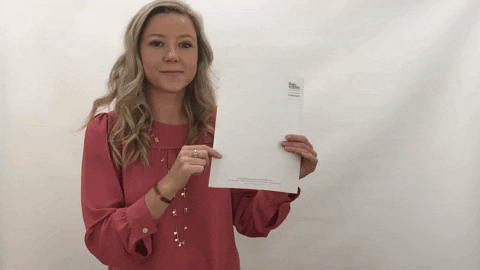Throughout this blog, we will navigate the pros and cons of paying travel influencers beyond their initial collaborations, shedding light on the intricacies of this practice specifically within the travel industry. Our aim is not to provide a definitive "yes" or "no" answer, as the decision depends entirely on your own unique situation. Instead, we empower you with insights and knowledge to make an informed choice based on your specific circumstances and objectives.
We will delve into the potential advantages, such as increased exposure, authentic storytelling, and long-term partnerships, while also examining the potential drawbacks, including budget constraints, potential lack of authenticity, and the potential of diminishing returns.
Our aim is to equip you with the knowledge necessary to navigate the complex landscape of influencer marketing in travel, enabling you to make informed decisions that align with your brand's identity, marketing goals, and financial considerations.
The travel industry thrives on inspiration and captivating storytelling, making influencer marketing an ideal avenue to reach and inspire potential travellers. Travel influencers possess the ability to transport their audiences to awe-inspiring destinations, ignite their wanderlust, and build an emotional connection.
However, determining whether additional compensation is warranted for their services requires careful evaluation. Factors such as the influencer's audience demographics, engagement rates, content quality, and your brand's goals all contribute to the decision-making process.

But before we get into the huge issue of payment – what exactly are influencers?
Influencers are individuals with a significant online following, they possess the ability to sway consumer opinions and shape purchasing decisions. The role of an influencer has massively changed in the past few years – often, one can be both an influencer and something else. Often celebrities are celebrities and influencers, or journalists are writers and influencers, the line between professions is now extremely blurred, with each part relying on the other.
Being an ‘influencer’ is a powerful role, that comes with a lot of great perks (free hotel stays being just one), and historically it has been the case – even with extremely well-known influencers – that the stay or experience they were promoting being complimentary was ‘enough’ in terms of payment.
But, as the career of influencing has become arguably more mainstream, more blurred, and more costly, the workload associated with this career has also increased. Influencers spend a lot of time, money, and carry a lot of personal risk when promoting any brand.
For example, the infamous Fyre Festival fiasco – located on Great Exuma island in the Bahamas and promoted heavily on social media by the likes of Bella Hadid, Kendall Jenner, Hailey Baldwin and more. On social media the influencers involved in the campaign portrayed the festival as a luxury event that promised great live music, a tropical location and famous attendees – however the reality was that the festival soon became known as ‘the greatest party that never happened’. So big in fact, that Netflix made a documentary about it.
Fyre Festival is a great example of how influencer collaborations can go extremely wrong – and damage not just the brand, but also the influencer. So, there is clearly a lot at stake here and a lot hanging on getting it ‘right’.
Heads up!
Please note that this blog post is not about how to choose influencers and how to determine whether they are right for your brand. We’ll write a separate blog post on that in the coming months as we believe it’s important that an influencer has a specific skill or credibility in a topic that is aligned with what you want to promote. This blog post is about whether you should or shouldn’t pay for an influencer – and if so, how much.
If you want an introduction to influencer marketing you may also want to read our blog: How to work with travel influencers: The ultimate guide
Should I allocate additional budget for influencer payment – on top of hosting?
Influencers have the potential to make a huge impact on sales for travel brands. It’s a tried and tested method and collaborations can be hugely beneficial for both parties.
There is a formula to this, and it usually involves a free stay, or a free experience, in return for some deliverables. These deliverables are things like an agreed amount of Instagram posts, or reels. Or can even be TikTok or YouTube videos. So, if this is the status quo, why shake it up?
More frequently, we’re being asked about additional payments – both by brands planning their budgets and also by influencers being asked for fair pay for fair work.
There are some really good reasons why you’d choose to pay an influencer, outside of a scope of agreed work. These include:
1. Time required for ‘good work’
Influencers often spend a significant amount of time creating content for collaborations, and we believe it's important for them to be fairly compensated for their time and effort, as you’d expect in any industry.
Algorithms are always changing and there is work involved in trying to stay at the top of the field. Influencers who are the best-of-the-best, often have put years into honing their craft – not discounting the time and energy required to do a good job on-property as well, whilst also convincingly looking like they’re having fun on camera – is an art in itself.
Plus, Influencers may also have to invest in equipment, software, training and other resources to create high-quality content, which can be costly.
2. Limited time and availability
Many influencers have a limited amount of time available for collaborations and travel press trips, and they may need to prioritise paid opportunities over unpaid ones in order to maintain their income.
The competition for influencer trips is massive. When we at Lemongrass sent out invites to a Lausanne influencer trip last year, over 75% of them came back and said that they cannot afford to take this trip on, instead of another which was paid at a similar time, even if they preferred our itinerary.
Travel press trips can be expensive, and influencers may need to cover additional costs for trips that are not compensated by the brand or destination, as its extremely rare that everything would be covered by the brand.
We often recommend allowing influencers to travel with a plus one (or a family – if you want to promote family travel content). You get better content if people are enjoying themselves and this is much easier as we know with a plus one on a trip rather than walking around alone. But then the content creator often has to cover these costs. Therefore, for a complimentary trip they are actually making a loss.
3. Gets rid of time-wasters
Charging for collaborations and travel press trips can help influencers weed out low-quality opportunities and focus on partnerships that are truly worth their time and effort. By charging for collaborations and travel press trips, influencers can also establish themselves as professionals and demonstrate that their work has value – which it does. As ‘influencing’ becomes more and more of a establish career path, we can expect to see perceived value increasing, which will come with an additional price-tag that wasn’t there before.
4. Can kill two birds with one stone
If we handle a client's social media channels on a retained basis we always combine this with a series of influencer trips. Why? Hosting an influencer means that not only can we bring their followers to our clients’ social media (thereby growing the following of our own client), but we also negotiate access to video and photo assets, which we can then use for content creation afterwards. This means the client saves on hiring a photographer or videographer. So the double benefit of influencers helping to grow a clients’ social media following and supplying us with raw assets which we can use and re-use later often makes it worth considering a small fee.
And finally,
5. The impact of Covid
During the pandemic we saw a lot of travel content creators take on full time or part time jobs. Blogging and content creation took a side role in some cases. In some scenarios we are now competing with holiday allowance, too - less time for trips. This is especially true for journalists and influencers, who have extremely limited time off and are now required to either travel on trips only at the weekend or during their holidays.
But are there times, or reasons why you might not want to pay?
We all know that budgets aren’t limitless, and that it’s not always possible to stretch to meet an influencer for additional payment, despite how great their work may be. Plus, we can sympathise that having to allocate budget towards payment means your brand might end up with less influencer trips overall, having a knock-on effect on your own personal KPIs.
So what you should consider if you get asked for additional payment? What concerns flag that this partnership might not be the right kind of collaboration for you, or for you right now?

1. Authenticity Concerns
Consumers are becoming increasingly discerning, and transparent influencer-brand partnerships are essential to maintain trust.
If maintaining an organic and genuine connection with the audience is crucial for the brand, it may be better to focus on organic collaborations or influencer relationships that do not involve monetary compensation.
Read more in our blog; The end of Influencers? Or a chance to market better? Travel’s “de-influencing” trend.
2. Difficulty Measuring ROI
Determining the return on investment (ROI) of influencer collaborations can be challenging. Just like other more traditional marketing mediums, the impact of influencer marketing is often subjective and hard to quantify. You need to be clear what you’re hoping to achieve through this partnership. More exposure with a younger audience? Establishing yourself as a family location? You can see how these two objectives would need very different influencers at the helm.
If the brand's target audience does not align closely with the influencer's followers or if the influencer's engagement and conversion rates are low, it may not justify the expense of paying for their services. It's important to consider the potential return on investment and whether the influencer's reach and impact align with your goals.
It’s also important to remember that sometimes smaller influencers might be a better fit. Bigger is most definitely not always better. We would always recommend relevancy, alignment with brand values and engagement rates are more important than number of followers.
3. Alternative options
Maybe your brand needs additional life support on Instagram, and you’ve all agreed that boosting engagement is what is needed. But consider your strategy – it might not be that influencer marketing is actually the best fit for you. For example, if you need to encourage organic word-of-mouth engagement, influencer marketing is not the best way to achieve that. You’d be better swapping your budget for promoted posts, or running Instagram giveaways to see the same increase in engagement you’d hope for with Influencers.
In conclusion
Ultimately, whether travel influencers should be paid is a matter of negotiation and agreement between the influencers and the brands or companies they collaborate with. Clear communication, transparency, and maintaining authenticity are vital for both influencers, their audience – but also for the brand.
And what about other expenses?
If your influencer has agreed to visit and promote your hotel or destination on a barter basis, are there any other additional or hidden costs to be aware of?
1. Deliverables and Scope of Work: Consider the specific deliverables you expect from the influencer. Will they be creating blog posts, social media posts, videos, or a combination of these? The complexity and extent of the work required can impact the compensation they might require. Don’t assume that barter basis will cover an endless list of online promotion for your brand, and be clear on your expectations from the get-go.
2. Exclusivity and Usage Rights: If you want exclusive rights to the influencer's content or want to restrict them from promoting competitors during a specific period, this can affect the compensation. Exclusive partnerships often – rightly – warrant higher rates, and barter basis likely wouldn’t be enough to cover this.
3. Duration of Collaboration: The duration of the partnership can influence the compensation. Short-term campaigns or one-time collaborations might have different rates compared to long-term partnerships or multi-project campaigns. And don’t assume that just because you’ve worked with an influencer once many years ago, that their rates will be the same – social media is very fluid, they may well have a different financial expectation as their own personal brand has grown.
4. Additional Expenses: Apart from accommodation and food, consider any additional expenses the influencer might incur during their travel, such as transportation, activities, or equipment rental. Reimbursement or covering these costs can be factored into the compensation, but should always be discussed upfront.
It's important to engage in open and transparent negotiations with the influencer to find a mutually beneficial agreement. Consider discussing the factors mentioned above and reaching an agreement that acknowledges the value the influencer brings to your brand while aligning with your budget and campaign goals. If the partnership is done well, and fits both parties, it can benefit everyone.
All of the above means that we now always have agreements in writing with influencers we work with. We also get them to sign forms to confirm they need to have valid travel insurance, are not travelling against doctors orders etc. We recommend you do the same – be specific so there are no nasty surprises during or after the trip.

So what are the industry standard rates for travel influencers?
The rates for travel influencers can vary significantly depending on factors such as their reach, engagement, content quality, and the specific requirements of the collaboration. While there is no definitive industry standard, we have provided some general guidelines based on common practices and observations:
1. Nano Influencers: These are influencers with a smaller following, typically ranging from 1,000 to 10,000 followers. Rates for nano influencers can vary widely, but they often receive compensation in the form of free products, accommodation, or small fees ranging from £30 to £300 per sponsored post or campaign. Please note you should never pay Nano influencers on top of accommodation and in most cases you shouldn’t pay for flights/transportation either. Fees only apply if you want them to talk about your travel brand without a hosted trip.
2. Micro Influencers: Micro influencers usually have a follower count between 10,000 and 100,000. Their rates can range from £150 to £1,500 per sponsored post or campaign, depending on their engagement rates and the deliverables required. Again, we usually don’t pay micro influencers on top of hosted trips, but you will be required to host and pay for flights (at the higher end of follower count).
3. Mid-Tier Influencers: Influencers in the mid-tier range typically have between 100,000 and 500,000 followers. Their rates can range from £500 to £8,000 per sponsored post or campaign, considering their reach, engagement, and the complexity of the content creation. If there is a very strong brand alignment or the influencer has something to promote themselves, which aligns with your brand you might be able to get away with just hosting and paying for travel – however, you may wish to put some budget aside. We work a lot with this tier of influencers and in 70% of all cases manage to negotiate a no payment collaboration, but if you want something extra (assets etc) we recommend you set budget aside.
4. Macro Influencers: Macro influencers have a substantial following, typically between 500,000 and 1 million followers or more. Rates for macro influencers can start from £3,000 and go up to £30,000 or more per sponsored post or campaign, depending on their reach, engagement, and the level of exclusivity required.
5. Celebrity Influencers: Celebrity influencers, including well-known personalities or public figures, can command even higher rates, often exceeding £50,000 per sponsored post or campaign. These rates can vary greatly based on their level of fame and influence.
It's important to note that these figures are general estimates, and rates can vary depending on factors such as the influencer's niche, geographic location, industry demand, and the specific campaign requirements. Influencers may also negotiate rates based on their unique value proposition and expertise. It's always recommended to conduct thorough research, review influencers' rate cards, and engage in open discussions to arrive at a fair and mutually beneficial compensation agreement.
Finally, Influencers charge different rates for different platforms. TikTok is currently still cheaper than Instagram - but expect that to change as the platform matures and creators become more established. Conversely, to run a travel brand's TikTok account is more expensive than Instagram because of the work involved in creating content (voiceovers etc) and the ad hoc nature with constantly changing trends.
Plus, if you need help, get in touch – we can help you decipher what is a good and relevant offer for your brand.
One word of consolation: we’ve worked with influencers of all shapes and sizes and sometimes luck is on your side. We’ve had influencers like Zoella with over 9 million followers do several videos for one of our clients for free- because the brands perfectly aligned (and we had established a relationship with her). So sometimes it’s cheaper to pay an agency like us a retainer to secure influencers for you for free (shameless plug!).

Our top tips to help you get started
Step one – Know what you’re looking for
You want influencers whose followers have similar interests to your brand; if you’re a budget hotel, look for influencers who write about travelling on a shoestring. And consider location – a locally based influencer is less likely to have travel and subsistence expenses. This is why its so critical to know your audience, who are they following, what are their interests?
Find out more in our blog: Knowing your audience.
Step two – How to find them
There are a couple of ways to do this.
First, you can use discovery tools like Buzzsumo, Sparktoro or Followerwonk to search social media bios to find your influencers - for example, type in ‘London travel blogger’ into Buzzsumo and you’ll find a list of Twitter users with those words in their bio and location info. You’ll then need to sift through the results to find suitable influencers. There are free feature-restricted or trial versions of both these tools.
With Sparktoro, you can search by interest and find ‘hidden gems’ – micro influencers with hugely engaged audiences, very focused on a niche subject.
You can also try searching directly within the social network of your choice, either using hashtags or just plain text. Try to keep it simple and hone it down – e.g. start with #LondonBlogger on Instagram and make a shortlist. Getting your list together and working your way down to really relevant, great influencers for your brand takes time, and that’s why influencer marketing has an associated cost to your brand as well – doing it well takes time.
Step three – Choosing!
Once you have a list of, say, 10-30 potential influencers, now’s the time to narrow them down.
The most eye-catching number is follower count (or subscription numbers, in the case of YouTube) - 50k followers means 50k people learning about your hotel, right? Sadly not.
Influencers know that brands pay too much attention to follower numbers, so less-than-honest individuals will buy followers to gain attention - but these fake followers are hardly likely to engage with their content, let alone be part of your hotel’s target audience.
You’ll need to look more closely at influencers if you want to be sure their reach is quite as large as they say it is. You can ask influencers for engagement stats, and bloggers for unique monthly visitors. Most importantly, take a look at their social media feeds and see how much engagement they receive on a typical promotional post. Ask for a media kit.
Remember: numbers aren’t everything. Influencers need to be a good fit for your brand, too. Influencers have loyal followers, and they will spot an inauthentic ad from a mile away, which diminishes trust. Ask yourself: Does your brand specifically align with this influencer?
Step four – Outreach
Be prepared with what you want to offer them, is it money? A free stay? An invitation to an exclusive event? And be mindful of what you want in return, a few posts? A story? This should be transparent and clear for all parties.
You can approach the influencer directly on their social media platform, and ask for an email address to send over a longer proposal. Some top influencers work through agencies, so don’t be surprised if you get asked to get in touch with their representation.
And remember, keep it short, keep it clear, and keep it personal – why do you want them? What do you have in common? What might their audience like?
Ultimately, whether to pay influencers or not is a decision that should be based on careful analysis
Influencer marketing has become an integral part of the travel industry, offering brands a powerful avenue to engage with their target audience and showcase their destinations. When it comes to the question of whether or not to pay influencers, the answer is not a simple "yes" or "no." It's a nuanced decision that requires careful consideration of various factors unique to each situation.
The key takeaway is that there is no one-size-fits-all approach. It's crucial for travel brands to evaluate their specific circumstances, marketing goals, target audience, and available resources. By considering these factors, brands can make an informed decision about whether paying influencers is the right strategy for them.
It's important to remember that influencer marketing is just one piece of the larger marketing puzzle. It should be integrated into a comprehensive strategy that includes other channels and tactics to maximize impact. Authenticity should always be a guiding principle, as audiences crave genuine connections and transparent experiences.
Ultimately, whether to pay influencers or not is a decision that should be based on careful analysis, weighing the potential benefits against the associated costs and considering the unique goals and resources of the travel brand. By taking a thoughtful and strategic approach, travel brands can harness the power of influencer marketing to inspire, engage, and captivate their target audience, gain exposure in new audiences, driving brand awareness, loyalty, and ultimately, unforgettable travel experiences.
Need an agency to handle your influencer and social media marketing?
Lemongrass is a specialist PR and Content agency for travel brands. We create meaningful influencer campaigns that connect with your travel brand’s target audiences.
Let’s start a project – call +44 (0)1865 237 990 or email abi@lemongrassmarketing.com.

